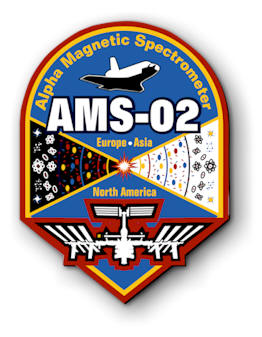The Science
Cosmic rays -
When we look at the sky, we see bright objects: the Sun, planets, stars,
distant Galaxies. But since one century, we know that the Earth is not only hit by light, but also
bombarded by charged energetic particles: protons, nuclei, electrons, or antiparticles, that come in at
nearly the speed of light. These particles are called cosmic rays. And before reaching our detectors
near Earth, they have traveled million years through the interstellar space of the Galaxy.
For this reason, cosmic rays are unique messengers of the Cosmos: they tell us a story about the Universe that we would not learn from light alone.
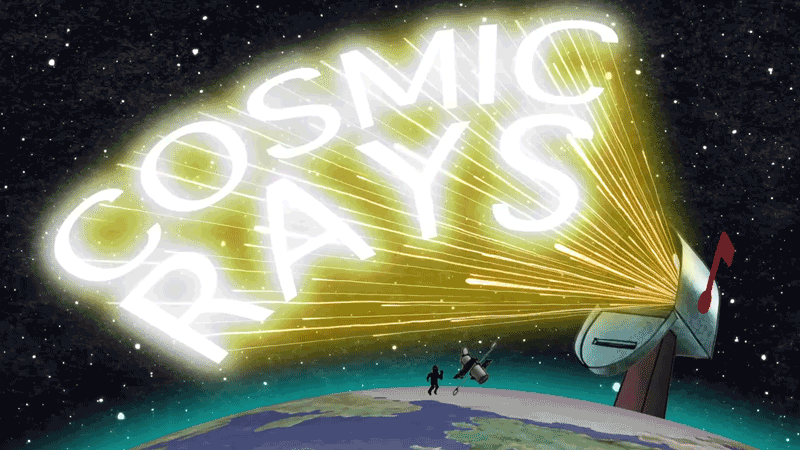
Solar modulation -
However, in the last part of their journey toward our planet, these particles
encounter the Heliosphere, a complex environment under the influence of the Sun. In this medium,
cosmic rays are deflected and decelerated by the turbulent magnetic field of the Sun, which is dragged
out by the solar wind. As a result, the intensity of this cosmic radiation received at Earth (and other
properties) is different from that of the interstellar space. Moreover, the change of their intensity
is not a stationary effect: it moves and changes as the Sunís magnetic fields move and change. The
change of the cosmic ray intensity caused by Sun's magnetic activity is known as
solar modulation of cosmic rays in the Heliosphere.
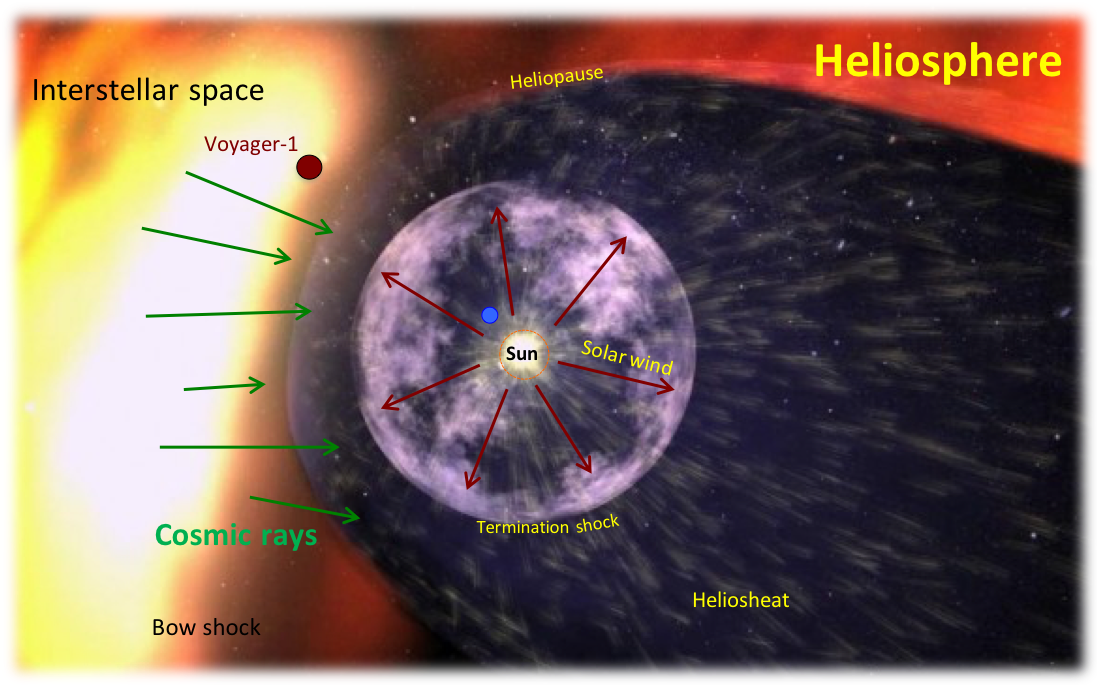
What is the Heliosphere? -
The Heliosphere is a giant bubble of plasma. It can be considered region that is influenced by the
Sun, which extends to about 120 astronomical units (that is, 120 times the distance between the Earth
and the Sun). The Heliosphere is created by the solar wind, a magnetized plasma of charged particles
that is continuously ejected from the Sun at supersonic speed. In the wind, the magnetic field lines and
are tied to one another and move together with the flow of the plasma.
Furthermore, because the Sun is spinning while ejecting the plasma, the large-scale structure
of the wind has the form of a rotating and swinging spiral, the so-called Parker's spiral.
The influence of this spiral-shaped magnetic field on the interplanetary medium creates a large
structure in the whole Solar System, called heliospheric current sheet.
It warps into a wavy spiral shape that has been likened to a ballerina's skirt.
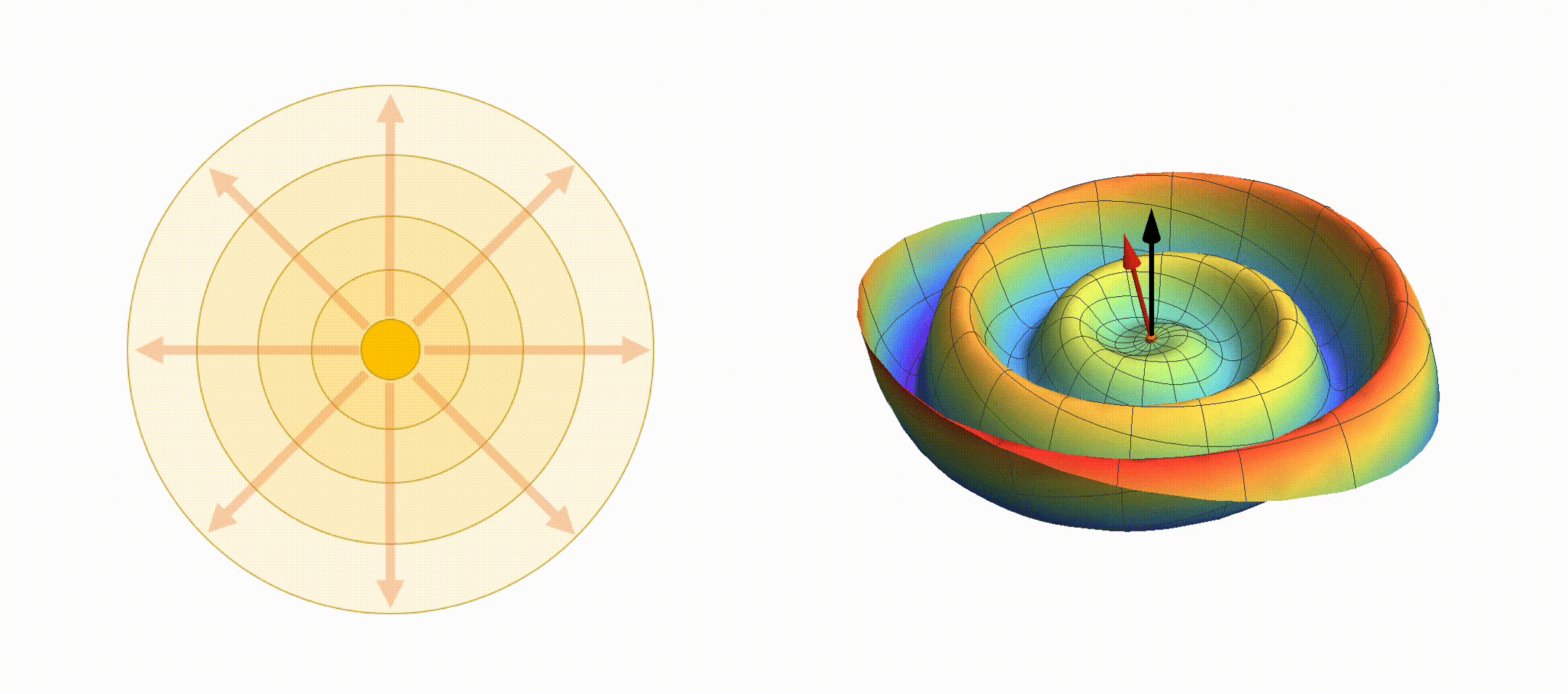
Why solar modulation is important? -
Understanding the solar modulation effect is very
important for us, because this phenomenon limits our ability in unveiling the origin of cosmic rays,
to identify the sources of Galactic antimatter, and to place constraints on the particle nature of cosmological dark matter.
Another important reason to care about solar modulation is because the varying cosmic ray flux in the
interplanetary space can provide a significant challenge for space missions traveling above Earthís
protective atmosphere.

What we know about solar modulation? -
A general theory of solar modulation was established in the 60's
by Eugene Parker, who also hypothesized the existence of the solar wind.
They developed complex mathematical equations describing all
physical processes experienced by cosmic rays traveling in the interplanetary space.
The fundamental transport equation reads:

This equation determines the time evolution of the particle phase space density ψ(r, R, t), where R is the
magnetic rigidity (momentum/charge ratio), t is time, and r is the particle position.
Solving the equations, however, require a deep understanding and modeling of the physics processes of cosmic rays in Heliosphere.
When traveling across the plasma, cosmic rays experience various types of physical mechanisms.
One is diffusion. From Latin, to spread way out, diffusion is a physical process of particles
moving apart within a medium, that arises from the small-scale turbulent structure of the background magnetic field.
If we give a close look at the plasma, in fact, the magnetic field lines are fair from being regular. These
irregularities make cosmic particles to move randomly, and to eventually spread out in all direction.
Another important process is called convection, that is, the global movement of particles within a flowing
fluid. For example, the flow of liquid water transports molecules or ions that are dissolved in the
water. Similarly, cosmic rays are transported by the flowing wind. Since the wind blows outwards,
it is the major obstacle of cosmic rays to reaching the inner Heliosphere and eventually our planet.
Due to convection, cosmic particles also undergo adiabatic deceleration, namely, they slow down,
because they energy is gradually released to the expanding wind.
Finally, charged particles experience drift motion. At large scale, where
the magnetic fields show a regular spiral stucture, the field-lines guide the particles to
make small helicoidal trajectories around them. Very interestingly, particles and antiparticles will
experience opposit drift, because the interaction of electric charges with magnetic fields depends on
their sign. Due to drift, cosmic particles in the Heliosphere behave much differently from their antiparticles.
Moreover, the effect is time tependent because the magnetic activity of the Sun evolves with time.
The Sun follows a 11-year periodical cycle, the so-called Solar Cycle, during which it changes in the levels
of ejection of solar wind. Its appearance also change, for example, in the number and size of sunspots,
flares, or other manifestations. These changes cause perturbations in the whole Heliosphere,
including the transport of cosmic rays.
Observationally, the inverse relationship between solar
activity and the cosmic ray intensity at Earth is known since long time. It can be seen from the following figure:
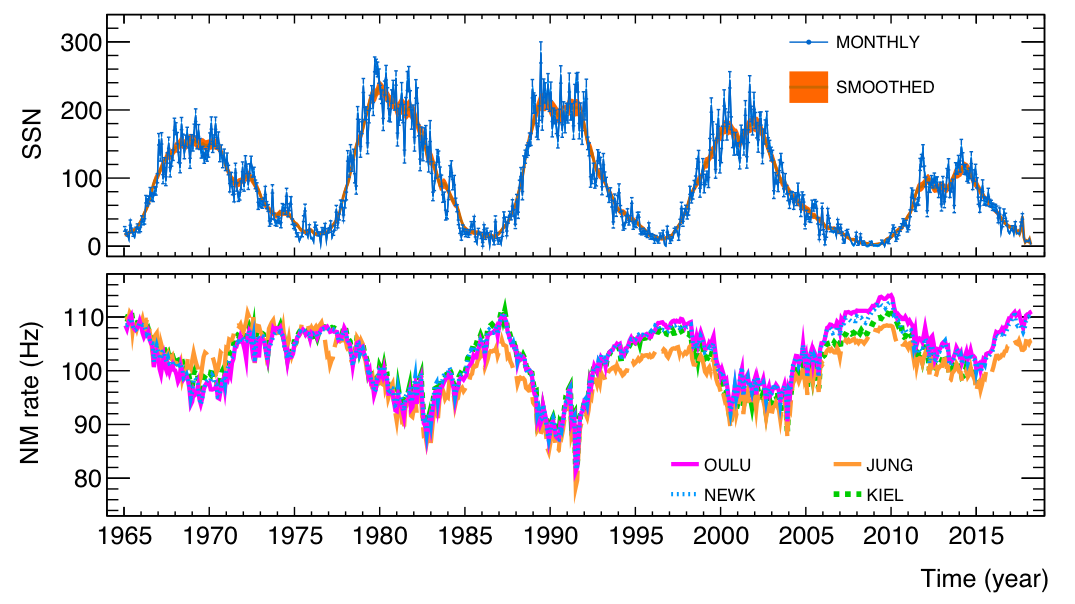
The top panel of the figure shows the time evolution of the monthly number of sunspots, that are a well known proxy for the Sun's magnetic activity.
In the bottom panel, the counting rates of several neutron monitor stations, that represent an indirect measurement of the
cosmic ray flux arriving Earth. In both quantities, the 11-year periodicity is apparent, as well as the anti-correlation
between solar activity and the intensity of the cosmic ray flux.
Another fashinating phenomenon is the reversal of the solar magnetic field:
every 11 years, the polarity of the Sunís magnetic field flips from North to South.
When the reversal occurs, the behavior of cosmic particles and antiparticles interchanges.
The last magnetic reversal occurred during the Solar Maximum of mid-2014. With the analysis of cosmic ray data
collected in recent years, we may expect to find valuable pieces of information in the spectra of particle and antiparticles
such as positrons and electrons, or antiprotons and protons.
Cosmic ray measurements -
The solar modulation effect is studied with constant observation of the Sun's activity and with the
continuous detection of cosmic rays. Several experiments are currently orbiting around the Earth,
constantly monitoring the time variation of the cosmic-ray intensities. A notable example is the
Alpha Magnetic Spectrometer (AMS) experiment,
a new generation high-energy physics detector installed on the International Space Station (ISS) in May 2011 and operating continuously since then.
In the first 7 years of missions, AMS has collected over 100 billion cosmic ray particles and antiparticle events,
and performed high-precision measurements of cosmic ray energy spectra and nuclear composition.
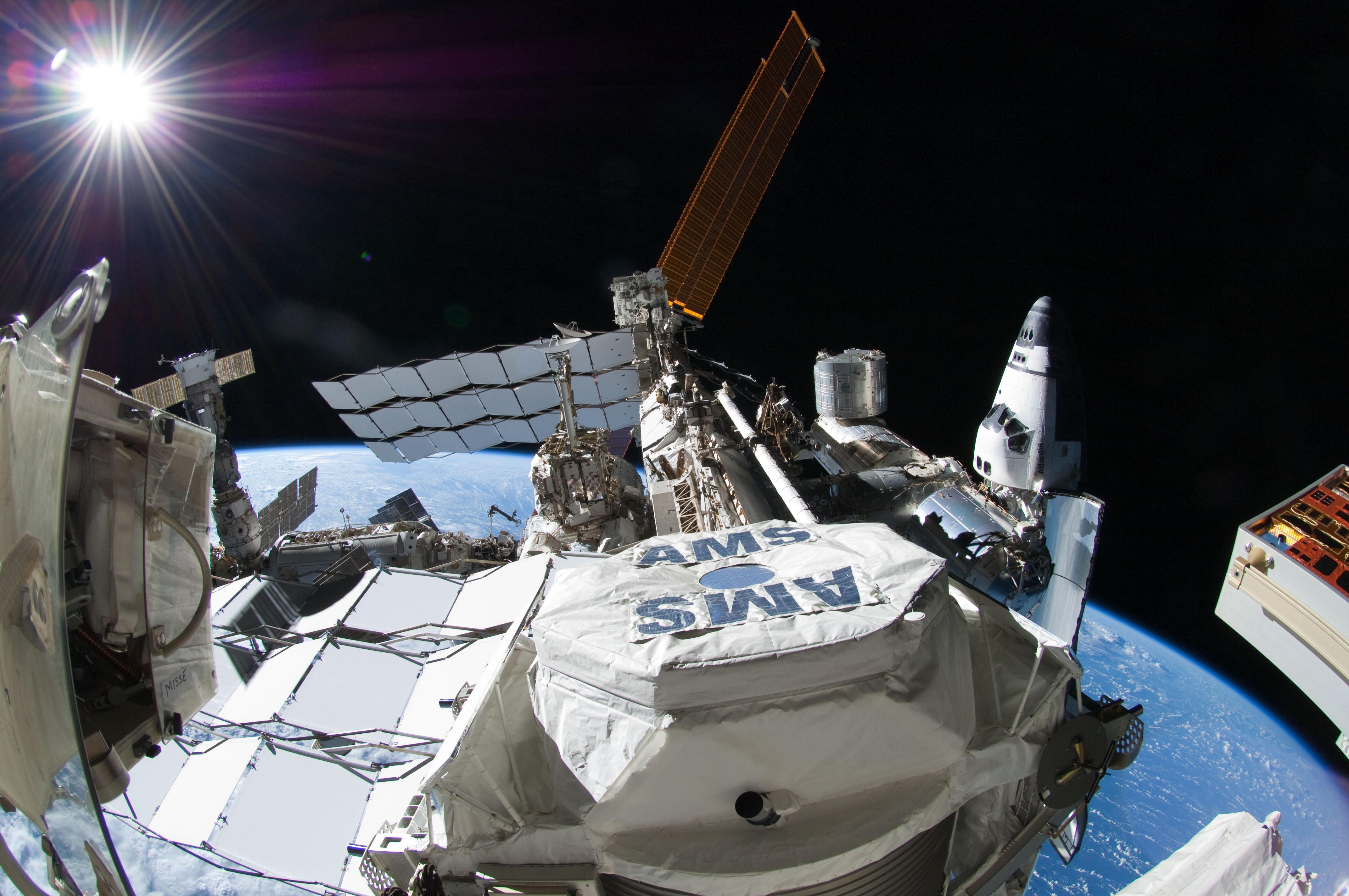
The long duration of the AMS mission, planned to last for the whole ISS lifetime, will cover a complete Solar Cycle
from the ascending phase of cycle 24, through its maximum, and the descending phase into the next solar minimum.
This makes AMS an excellent multichannel monitor of solar activity.
With dedicated time-resolved and multi-channel measurements of cosmic ray fluxes in space, in connection with the changing solar activity,
AMS may give us strong insight on the so-called solar modulation effect.
Moreover, in 2012,
the Voyager-1 spacecraft has left the Heliosphere. Thanks to Voyager-1, for the first time in the
history, we have now direct data on cosmic rays in the interstellar space.
These observations add to a large wealth of cosmic-ray data collected over the last decades by space missions
such as CRIS/ACE, Ulysses, IMP-7/8, EPHIN/SOHO, and PAMELA.
All these pieces of information, together with the calculations of cosmic-ray trajectories in the Heliosphere,
may lead to transformative advances in Solar Physics and Space Science.
Probing the Sun -
To understand the phenomenon, essential pieces of information are those related to the Sun's activity,
such as data on solar wind, magnetic field, or heliospheric plasma properties.
These data are provided by a number of ground based observatories, e.g. Wilkox Solar Observatory in Stanford, USA,
or by spacecrafts such as Voyager 1 and 2, the Advance Composition Explorer ACE, or the Solar and Heliospheric Observatory SOHO.
Very recently (August 2018), the NASA Parker Solar Probe was launched.
The spacecraft
is named in honor to Eugene Parker.
Here is Dr. Parker whatching the launch of "his" probe:

The Parker Solar Probe mission is scheduled to last 7 years.
The first data download from the probe are expected in early December,
after the probe reaches its first close approach of the sun in November.
The Parker probe is the first spacecraft to fly into the low solar corona.
It will assess the structure and dynamics of the plasma and magnetic field generated by the Sun,
the energy flow that heats the solar corona and impels the solar wind,
and the mechanisms that accelerate energetic particles.
This will lead to an increased understanding of solar wind and
help to improve forecasting of major space weather events.



